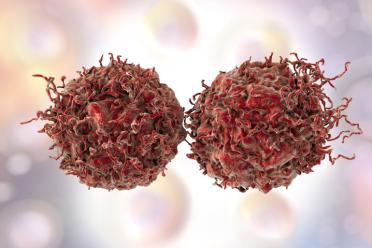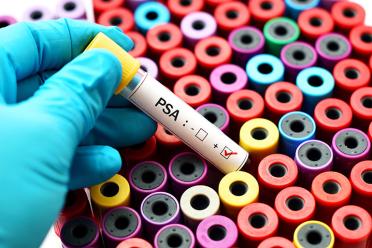Prostate cancer uncovered: a new genetic plan of attack
Prostate cancer is the most common cancer in men, over 47,000 patients are diagnosed with the disease every year - 129 per day.
The disease can develop slowly and not cause an issue, but the cells can also grow uncontrollably in the gland and in some cases, spread outside the prostate at a rapid fatal rate. Dr Daniel Brewer, Visiting Worker at EI and Senior Lecturer at Norwich Medical School, UEA, was part of the team of scientists that detected new genes linked to the progression of prostate cancer to help determine tailored drug treatments. We find out the story behind the bioinformatics analysis of previously unknown genes that control the disease’s attack.
The CRUK-ICGC Prostate Project is a multi-site sequencing project established in 2011, funded by Cancer Research UK (CRUK) within the International Cancer Genome Consortium (ICGC) framework.
The aim of this project is to collect and analyse whole genome sequence data from cancerous tissue samples from 250 prostate cancer patients. This analysis looked to understand the multifocal and clinical heterogeneity of the disease to devise markers for predicting diagnosis outcome and drug targeting.
This included the molecular development of the castration-resistant and metastatic (spreading to distant parts of the body) form of the disease, as well as the overall cause of prostate cancer - particularly the large variation in incidences that occur in different populations and ethnic groups.
Combined with existing data and drug information from other sequencing studies, our work began from an in-depth analysis of around the first hundred patients we sequenced as part of the CRUK-ICGC prostate UK project - opening up 80 potential new ways to target the disease.
With some of the leading prostate cancer research groups in the UK and internationally, we identified important variants in the genetic code of a cancerous cell and how we could counteract these through developed drugs.

In order to carry out our analysis, the bioinformatics community provided an essential role to help enrich our scientific knowledge. The bioinformatics analyses performed at EI are really at the heart of this kind of research.
Through applying a large range of cutting-edge computational biology techniques, such as those that are regularly performed at EI in vertebrate health genomics, they provided us with unique insights which led us to our core findings. Two that I’d like to particularly highlight are the heterogeneity and evolution analysis, and canSAR to detect possible drug targets in prostate cancer.

The bioinformatics analyses performed at EI are really at the heart of this kind of research.

With the heterogeneity and evolution bioinformatics, we were able to perform cluster analysis on the cancer cell fraction that genetic changes appear in, which enabled us to identify subclones of cells i.e. cells that have the same genetic changes. By comparing these differences in the subclones, we could identify the changes that came earlier or later in the disease, so we can then build a picture of how the cancer has evolved.
To detect possible drug targets in prostate cancer, we applied established chemogenomic technologies using the comprehensive database for cancer drug discovery, canSAR, to map and pharmacologically (biological study of drug action) annotate the cellular network of the prostate disease genes identified in our study.
canSAR linked this genetic information with a map of the network of associated proteins and transcriptional (gene expression) interaction data. Each gene identified is mapped onto the network and annotated based on multiple assessments of ‘druggability’ - the likelihood of the protein being amenable to small molecule drug intervention.
80 of the proteins in the network were possible drug targets. From this, we found that the prostate cancer genes are embedded in a highly-druggable cellular network which contains 11 targets of approved therapies and 8 targets of investigational drugs.
Timeline of genetic changes is extremely important to understanding the cause of the disease.
The reason why prostate cancer is the most common cancer is unclear. That said, we know that incidents increase exponentially with age so one reason it is so common is probably due to the fact we are all living longer.
If early genetic changes are detected, it gives us a chance to develop biomarkers that will detect the disease at the earliest possible stage; if they’re late changes, then it gives us an understanding of how a tumour spreads further and eventually causes death - as well as providing possible drug targets to prevent this transformation.

We hope that the long-term impact of our research will result in clinical trials to identify drugs which interact with the genomic pathways affected commonly in prostate cancer. Ultimately, we would like this to lead to an improvement in prostate cancer patient outcome.
In the short-term, we expect that these findings will be validated in other next-generation sequencing studies and a larger version of our genomic dataset, and the drug interactions explored in the cell line (uniformed genetic makeup) and animal models.

Why is this study so important?